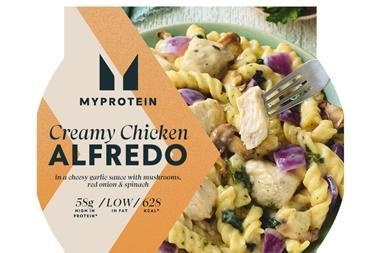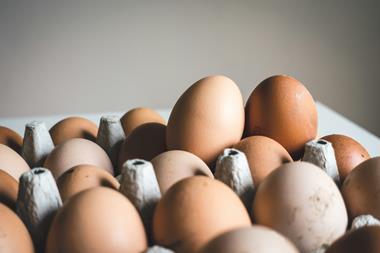
Publishing: 15 December
Submissions deadline: 2 November
Print & Online Advertising booking deadline: 23 November
Download the synopsis here
The Grocer’s Top Products Report is a must-have reference tool for anyone in UK FMCG. In partnership with Nielsen, this year’s report will crunch the numbers on 48 categories to reveal the winners and losers of the grocery price war. Packed with sales figures for more than 100 subcategories, a rundown of the most successful new launches and ad campaigns of the year and expert interviews with retailers and brand owners, this year’s report will include a wealth of multimedia digital content including films & members only content.
Editorial inclusion by invitation and via submission until 2 November. Please contact the writer for the relevant category report (below). Editorial project manager is emma.weinbren@wrbm.com.
The categories
Alcohol: Beer & Cider by Daniel Woolfson (Daniel.Woolfson@thegrocer.co.uk)
We’ve all heard about the craft revolution. But this year’s World Cup has proven a comeback for the big boys. So which beer brands are in growth? What activity has underpinned that? In ales, can traditional brands fight back? And is fruity the only future of cider? Or can strong ciders get their mojo back?
Alcohol: Spirits & RTDs by Daniel Woolfson (Daniel.Woolfson@thegrocer.co.uk)
Spirits are on a roll. With impressive growth across the majority of brands, who is winning big and why? Is there any stopping the gin boom? Who is winning in the revamped whisky sector as challengers take on established brands?
Alcohol: Wine by Daniel Woolfson (Daniel.Woolfson@thegrocer.co.uk)
Still wine continues to be up, but only thanks to price rises. Who have been the winners this year? Who is losing out? Meanwhile, sparkling wine continues to grow, but seemingly at the expense of champagne. What is the future of the bubbly market?
Baby & infant products by Rob Brown (rob_j_a_brown@hotmail.com)
The discounters are making their mark on babycare, as sales through the supermarkets slump. In terms of brands, premium and organic brands are continuing to perform well – although some traditional organic brands are losing share. What’s happening here?
Bagged snacks by Carina Perkins (Carina.Perkins@wrbm.com)
So much for Brits shunning calorific treats. The big crisp brands are racking up impressive growth thanks to some bold new flavours. It seems calories don’t matter if you’re packing in plenty of punch. Saying that, there are also some strong performances among the healthy snacking brands. So what is determining the winners and losers in bagged snacks? What is the role of NPD in this market? Is there room for both healthy and less healthy options?
Batteries by Rob Brown (rob_j_a_brown@hotmail.com)
Amid a shift towards own label and cheaper outlets such as bargain stores and the discounters, many of the big brands are in decline in terms of supermarket sales. So how can the batteries sector can its energy back? What role is innovation and new technology playing?
Biscuits by Daniel Selwood (Daniel.selwood@wrbm.com)
Britain’s sweet tooth shows no sign of disappearing. Sweet biscuits are up in value, while savoury is in decline. Which biscuits are hitting the sweet spot? What is the common theme here? How is NPD shaping the future of the category? And why is savoury being shunned? The strongest growth of all biscuits is in cereal bars. What is driving this?
Bread by Rob Brown (rob_j_a_brown@hotmail.com)
The war against carbs continues to rage on, if bread sales are anything to go by. Volumes are down at a total level and among many of the major brands, which are only being saved by price increases. Own label is a major exception to the rule, having racked up impressive growth in both value and volume thanks to more premium ranging. So what is the future of bread? Which are the brands bucking the decline, and how are they managing it?
Cake by Ash O’Mahony (Ashleigh.OMahony@wrbm.com)
Who doesn’t love cake? Not only are Brits eating more of it, but they’re eating pricier stuff too. That said, there are plenty of established brands struggling with declines. So who is driving up the category? Plenty of fast-growing cake brands have tapped into the power of popular TV personalities, cartoons or films. What role is this playing?
Canned food by Rachel Graham (Rachel.graham@wrbm.com)
Canned is on the up! All sub-categories aside from pasta have seen increases in value – an impressive feat for a category that has long been in decline. This is mostly down to increasing prices, so is this down to more premium products or just inflation? Is the image of canned food changing? Could we soon see people stockpiling before Brexit, as some have suggested?
Cereals by Ash O’Mahony (Ashleigh.OMahony@wrbm.com)
Battling negative publicity and a whole host of emerging, inventive breakfast options, it’s no wonder the cereal category is flat. But certain brands are bucking the trend, and particularly porridge. To what is extent was this driven by a cold winter? And how will innovations shake up the category?
Confectionery: Chocolate by Megan Tatum (Megan.tatum@wrbm.com)
Innovation seems to be leading the way in chocolate confectionery. Brands that have offered something new beyond their core propositions are on the up. Others are struggling. So to what extent is NPD the key to success in chocolate confectionery?
Confectionery: Sugar by Daniel Selwood (Daniel.Selwood@wrbm.com)
Considering sugar is the focus of the war on obesity, sugar confectionery is holding its own with flat value. Mints, though, seem to be struggling – as does gum. So how can their fortunes be reversed? And who is leading the way?
Cosmetics by Ash O’Mahony (Ashleigh.OMahony@wrbm.com)
Cosmetic sales may be falling in the supermarkets but that won’t last long, if the major mults have anything to do with it. Sainsbury’s, for one, has unveiled a new focus on beauty and many others are taking a similar tack. To what extent will this be successful? And how will the renewed focus change the fortunes of brands – will cheaper offerings suffer?
Dairy: Butters and Spreads by Rachel Graham (Rachel.graham@wrbm.com)
Price rises have been the only thing bolstering the butters & spreads category, as volumes fall across the board and brands become squeezed on retailer space. Who is winning? Who is losing? And is there anything that can increase butter sales?
Dairy: Cheese by Kevin White (Kevin.White@wrbm.com)
Similarly to butter, the value of the cheese market is benefitting from a rise in average prices. To what extent is this down to inflation? Is there any NPD propping up values? How is standard block cheese performing? Are any types of cheese doing particularly well?
Dairy: Dairy Drinks by Carina Perkins (Carina.Perkins@wrbm.com)
Brits have got milk. Both unflavoured and flavoured milk drinks are up on last year, but for different reasons. Unflavoured milk is purely relying on price rises, while flavoured milk has sold plenty more in volume terms, too. Why is this? To what extent are iced coffee/breakfast drink brands contributing to the flavoured milk boom? And in the year of gut health, why are yoghurt drinks flat?
Dairy: Yoghurts by Kevin White (Kevin.White@wrbm.com)
Are the big yoghurt brands in trouble? While some of the category leaders are experiencing falling sales – dragging down the overall category by £12.7m – smaller brands are rising up through the ranks. So who are these challengers? What are they offering that their larger counterparts aren’t? And can they sustain this level of growth in a category that is in both value and volume decline?
Free from by Nina Mason (Angelina.Mason@wrbm.com)
There’s no stopping the free from boom. This year has heralded another year of double-digit value and volume growth. This growth hasn’t been equally split across the brands, though. While some are stagnating, others are powering through the ranks with stellar growth. So who are winners? Is dairy-free a particularly lucrative corner of the market, given the rise in veganism? What is the key to success in this growing category?
Fresh: Fruit and Veg by Rachel Graham (Rachel.graham@wrbm.com)
Those five a day messages appear to be finally getting through. Fruit and veg are up in both value and volume. In fruits, a mix of English favourites and so-called ‘superfruits’ are bolstering the category. In veg, the potato remains in decline – but plenty of others are enjoying strong growth. What is the story here? What is influencing consumer choices?
Fresh: Meat and Fish by Kevin White (Kevin.white@wrbm.com)
Are Brits swapping meat for fish? Fish is up in value and volume, with favourites such as salmon racking up multimillion pound growth. Meanwhile, meat is flat with the exception of poultry. What are the fastest growing and the fastest declining products, and why?
Frozen by Ash O’Mahony (Ashleigh.OMahony@wrbm.com)
The frozen revival is hotting up. All sub-categories have increased their value and volume aside from desserts. What role is innovation playing in the renewed perceptions of this category, and to what extent is it marketing and merchandising? How are retailers shaking up their frozen aisles? And can desserts learn from the success of fish, pizza and potatoes?
Hot beverages by James Halliwell (jameshalliwell@gmail.com)
Does this category need a name change? Most of the hot innovation in teas and coffees has been decidedly cold – from iced coffee to chilled infusions. How are these innovations creating new opportunities for tea and coffee players? At an overall level, coffee continues to outpace tea in terms of growth, and machine pods are a particularly hot area for sales. Saying that, instant sales are also growing fast – suggesting there is life in the instant cuppa yet. So how will this the market develop?
Household by Rob Brown (rob_j_a_brown@hotmail.com)
Eco-friendly is the name of the game in household. While shoppers are generally looking for the cheapest option possible – hence the rise in own label – there is one thing they will pay more for: sustainability. So just how much of a premium can these products command? Can they put the value back into household? In which areas is there more work to be done e.g. disposable wipes?
Ice cream by Ash O’Mahony (Ashleigh.OMahony@wrbm.com)
The meteoric rise of newcomer from overseas has dominated all the headlines in ice cream but, still, the top three brands all trade in indulgence. So aside from low-cal, what are the real drivers of growth in ice cream? What are consumers looking for? It is innovative flavours, handy formats, organic propositions, or just a general crowd-pleasing taste?
Jams and Spreads by Megan Tatum (megan.tatum@wrbm.com)
Times are tough for jams and spreads. Facing negative publicity over sugar content, the category has suffered declines in value and volume. Yet there are a couple of brands racking up some seriously impressive growth. How are they bucking the trend? What is it about these brands that appeals to modern consumers?
Laundry by Rob Brown (rob_j_a_brown@hotmail.com)
This time last year, laundry was reeling from a near £50m fall in value. It would be wrong to suggest this year has been a complete turnaround, but the drop is not nearly so high. So how have brands and retailers managed to stem the movement towards the cheapest possible option, whether it be choosing own brand alternatives or moving out of supermarkets towards bargain stores and the discounters? To what extent have premium products such as new, convenient formats, more concentrated liquids and perfume-inspired fragrances helped retain value?
Oils by Carina Perkins (Carina.Perkins@wrbm.com)
Is the boom in olive oil prices finally coming to an end? For many of the big brands, shoppers are paying less per SKU. Have brands lowered prices, or is it simply that shoppers are buying bigger packs to get savings? Also what is behind the decline of some of the big ‘healthy’ oil brands?
Over The Counter by James Halliwell (jameshalliwell@gmail.com)
Brits are reaching for the pills. Over the counter sales have increased in both value and volume over the past year, and it’s not just the cheaper own label sector that’s growing fast. There has also been some solid growth from brands, suggesting consumers are willing to pay more for added benefits. So how is premium pain relief pushing the category forward? Which brands are winning? How are they tapping into shopper motivations?
Paper Products by Steve Farrell (steve.farrell@wrbm.com)
Is the premiumisation of paper products finally coming to pass? For years, leading brands have tried to tempt consumers to part with more of their cash by unveiling more premium options. Yet category value has remained stubbornly flat as consumers have persistently chosen the cheapest options available. This year, average prices do finally seem to have risen, backed by plenty of successful, higher-priced NPD. So to what extent is this down to consumers choosing pricier options? Or is inflation simply driving up the price of a standard pack of toilet roll?
Personal care: Haircare by Marianne Calnan (Marianne.Calnan@wrbm.com)
Long hair is shaping the haircare market faster than a pair of GHDs. As more people grow their hair – and have the option of tying it back, as opposed to an obligatory daily wash – consumption of shampoo and conditioner is falling. But the trend also means consumers are needing to work harder to keep their hair in good condition – and they’re willing to pay a premium for products that do the job. Over the past year, we’ve seen a number of premium launches catering for the long hair market. So to what extent are brands changing to cater to new consumer needs, and who is winning?
Personal care: Grooming by Marianne Calnan (Marianne.Calnan@wrbm.com)
It’s a tale of two halves in grooming. On one hand, products seen as commodities have struggled to maintain value. Deodorants, bar soaps and liquid soaps have all registered declines (and that’s despite an increase in average prices across soap). On the other hand, the more added-value categories of skincare and shower products are in growth. How have they done this? To what extent have innovations such as cutting-edge skincare promises and more luxurious shower formats helped things along? And can deodorants and soaps learn any lessons?
Personal care: Male grooming by Daniel Selwood (Daniel.selwood@wrbm.com)
The rise of the beard and direct-to-consumer services have continued to hit the male grooming category. Yet some brands are storming ahead with double or even triple-digit growth. What’s the story here? What are these brands doing that others aren’t? And what’s going on in male skincare?
Personal care: Oral care by Marianne Calnan (Marianne.Calnan@wrbm.com)
Cleaning your teeth is fast becoming an exercise in science. A number of new toothpastes are coming onto the market with claims such as instant whitening or charcoal cleanliness, all of which has helped push up average prices by 2.2%. Similarly, average toothbrush prices are increasing with new claims of what they can do (although people are buying less due to electric toothbrush revolution). However, the opposite is true in mouthwash, where prices and sales are decreasing. So what are the main innovations pushing ahead the toothpaste and toothbrush markets? Is there anything going on in mouthwash that could turn things around?
Petcare by Daniel Selwood (Daniel.selwood@wrbm.com)
Retailer ranges are storming ahead of brands in terms of percentage growth. Granted, it’s from a small base – but does it show a renewed focus on petcare among the mults? What are they doing to tempt in shoppers? And how are brands responding in an increasingly competitive environment, in which they have to compete with direct-to-consumer services as well as retailers?
Ready Meals by Ian Quinn (ian.quinn@wrbm.com)
Brits are curbing their reliance on the microwave meal. Volumes have fallen across ambient, chilled and frozen ready meal categories. So is the oft-repeated narrative of consumers cooking more from scratch finally coming to pass? And how can brands reignite the nation’s love affair with the microwave? What role will new premium brands or restaurant ranges play in tempting back consumers?
Rice, Noodles and Pasta by Rob Brown (rob_j_a_brown@hotmail.com)
These days, we’re all looking for a quick and easy carb. Rice brands have had a bumper year as consumers look to microwave pouches for a speedy meal solution. So how is this trend being mimicked in noodles and pasta? Who will win the battle of the quicks carbs? Outside the area of speedy solutions, brands are growing in dried pasta – traditionally an area where own label wins. What is driving this growth?
Sauces: Cooking by Carina Perkins (carina.perkins@wrbm.com)
Innovation has been the driving force behind cooking sauces this year. New and unusual sauces are helping to increase interest in the category and mitigate falling sales. Which products are making waves? Which culinary areas have seen most innovation? As own label growth starts to gather pace, how are brands fighting back?
Sauces: Table by Ash O’Mahony (Ashleigh.OMahony@wrbm.com)
Market trends have had a huge influence on sauce NPD this year. We’ve had No Added Salt or Sugar ketchup, which has rapidly racked up sales in the era of the war on sugar. Then there’s been Vegan Mayo catering for the plant-based boom. Which have been the most important launches of the year and how have they affected brand performance? What do they say about the sauces category and the market in general?
Savoury pastries and meat snacks by Rob Brown (rob_j_a_brown@hotmail.com)
Pastries and meat snacks are reinventing themselves for the modern era. The brands with the biggest gains in this category are those that have innovated to keep up with new consumer tastes. So what have they been doing in terms of flavours and formats? Who is winning big? And who’s being left behind?
Sexcare by James Halliwell (jameshalliwell@gmail.com)
Aside from Viagra being made available over the counter, little has changed in sexcare. With few new products to tempt consumers, this perhaps explains why condom sales have fallen in value and volume. So what could reinvigorate the category? Is the increased prominence of sexcare in major retailers such as Sainsbury’s an opportunity for growth?
Soft drinks: Bottled Water, Squashes and Cordials by Daniel Woolfson (Daniel.Woolfson@thegrocer.co.uk)
If bottled water consumption is anything to go by, Britain is a pretty hydrated nation. The value and volume of the bottled water market is up once again this year. Who is benefitting and what role have environmentally-friendly bottles played in influencing sales? Having suffered a decline last year, squashes and cordials are back with a bang. Which brands are pushing forward this revival and how?
Soft drinks: Carbonates and energy drinks by Daniel Woolfson (Daniel.Woolfson@thegrocer.co.uk)
Who said the soft drinks tax was bad news for carbonates? Over the past year, they have racked up far more value growth than they did in they did in the year leading up to the sugar tax. In contrast, volumes are flat. So to what extent is the growth in value actually down to the tax? Is innovation helping to boost sales? Have sugary drinks actually fallen in volume terms? Energy drinks are also up despite the negative publicity over the ban on sales to children. How will this affect the category in future?
Soft drinks: Juices by Daniel Woolfson (Daniel.Woolfson@thegrocer.co.uk)
It’s all change in the juices and smoothies market. After Innocent stole the top slot from Tropicana last year, there has been yet another reshuffle of the top five brands. How does this reflect trends in the juices and smoothies market? How are new offerings such as Adez and Tropicana essentials faring?
Soup by Ian Quinn (Ian.Quinn@wrbm.com)
This year’s freezing winter just may have heated up the soup market. Ambient soup is pretty flat, but that’s an improvement on last year’s decline. And fresh soup is showing some far healthier growth. Who has won the battle of the soups? To what extent are spicy, on-trend flavours helping grow the market?
Sports nutrition by Nina Mason (Angelina.Mason@wrbm.com)
Talk about a shake-up! That the top three sports nutrition brands have all changed since last year shows just how fast-paced the market is. So who are these new pretenders to the throne? What is the secret to their success? And who is not faring so well?
At an overall category level, there has been a stellar rise in overall value and volumes, suggesting new shoppers are buying into sports nutrition. Who are these shoppers? How have they been tempted into the category? Is this to do with more distribution and better merchandising in retailers, or the new brands offering something different?
Finally, this is a fast-paced category full of innovation. What are the new developments that will shape the future of the market?
Tobacco by Ronan Hegarty (ronan.hegarty@wrbm.com)
Philip Morris has just announced it is spending £2m on encouraging smokers to quit. In this environment, what is the future of the tobacco industry? There is also a new number one in tobacco. What does that say about consumer habits?
Tobacco: E-cigarettes by Ronan Hegarty (ronan.hegarty@wrbm.com)
E-cigarettes are back with a bang. After suffering a fairly hefty hit to value last year, they have made a comeback with double-digit growth. To what extent have innovative new formats helped boost value? Are more consumers starting to shop for e-cigarettes at the supermarkets and if so, why?
Downloads
top products synopsis
PDF, Size 0.52 mb



















No comments yet